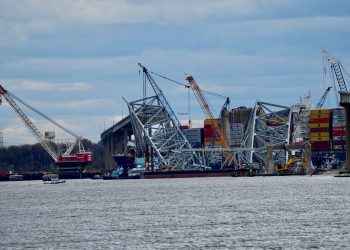Although the container sector is well regulated and highly regarded, many are the containers lost overboard. Thus, the Swedish Club provides an overview of statistics, as well as advice on preventing such losses.
Accordingly, Container focus explores planning, loading and stability, lashings, and provides advice on dealing with heavy weather. Case studies show the extent of the problems that can be revealed by heavy weather.
- Containers not being correctly stuffed or declared by the shipper
- Containers not being loaded as per the stowage plan
- Containers not secured in accordance with the Cargo Securing Manual (CSM)
- Lashing strengths not checked against the loading computer’s lashing module
- The vessel being too stiff with an excessive GM (Metacentric Height)
In this report, the Club considers container claims that have generated a cost of at least USD 5,000. This is to remove smaller claims which may only have incurred a survey cost, and instead focus on the claims which have generated a more substantial loss.
Lars A. Malm, Director, Strategic Business Development & Client Relations at The Swedish Club commented that
One catalyst for such losses is known to be misdeclared cargo. Sadly, the nature of these losses makes it difficult to translate incidents into data, and more importantly, identify the party that cause such damage to the industry.
The graph herebelow shows a spike in frequency of cargo claims for 2018 as the Club experienced an unusual amount of wet damage claims caused by flooding in the cargo holds. The high cost for 2016 was caused by a complicated total loss claim.

Moreover, while just over 4% of claims are for containers lost overboard, these account for over 10% of costs, as seen below.

The report also highlights that in terms of the carriage of containers, heavy weather is by far the most common immediate cause of containers being lost overboard at sea. The reasons can often be attributed to a series of multiple failures, rather than a single cause but raising awareness of these issues to both ship and shore staff will serve to prevent accidents from happening. This will not only reduce costs but more importantly will enhance the safety of vessels and their crews.
Lars A. Malm concluded that
When we look at many cases, we must question the quality of training received by all involved in the logistics chain.
To learn more click on the guide herebelow



































































